Ultimate Guide: Natural & Professional Solutions for Teeth Stain Removal
Published February 15, 2024
Ever looked in the mirror and wished for a brighter, stain-free smile? You’re not alone. Teeth stains are a common concern for many, and they can be caused by a myriad of factors. From that morning cup of joe to a glass of red wine at dinner, our daily habits can often lead to unsightly discoloration.
But don’t fret! I’m here to guide you through proven methods to get rid of teeth stains. Whether they’re surface stains or those pesky ones beneath the enamel, there’s a solution. With a mix of at-home remedies and professional treatments, you’ll be flashing a dazzling smile in no time.
So, let’s dive into it and discover how to reclaim your pearly whites. After all, a confident smile is the best accessory anyone can wear. Stay tuned as we explore the best ways to banish those stubborn stains from your teeth.
Understanding the causes of teeth stains
When it comes to teeth stains, understand that these discolorations are generally a result of various everyday habits and internal factors. While some causes may be more obvious than others – it’s vital to identify what could be tarnishing your gleaming smile.
One of the leading causes of teeth stains is what we consume. Items such as coffee, tea, and red wine are notorious for leaving an unwanted mark on your pearly whites due to their color pigmentation. But it’s not just dark beverages that’s the culprit. Foods, especially those with high levels of sugar or acidity, contribute to staining as they can erode enamel, often leading to discoloration.
Aside from your diet, smoking and tobacco use rank as top externals culprits for teeth staining. These habits introduce chemicals such as nicotine and tar, which soak into the pores of the enamel – resulting in noticeable yellow or brown marks. Now, if you’re a non-smoker and stick to a healthy diet, don’t assume you’re immune to teeth staining. Medications, such as antibiotics and high blood pressure drugs, can also cause discoloration.
Surprisingly, teeth discoloration isn’t always limited to surface level. Deep-set stains, also known as intrinsic stains, can occur beneath the tooth’s surface. These stains are often trickier and usually stem from factors such as aging, trauma to the tooth, or exposure to certain minerals. As we grow older, the outer shell of our teeth, the enamel, naturally wears down. As a result, the yellowish dentin layer underneath starts to show – taking with it the bright white shine.
With a deeper understanding of these causes, we’re better equipped to tackle teeth stains and reach our goal of a bright, stain-free smile. Let’s plunge into these strategies and solutions moving forward. Whether we’re looking to lift stains on the surface or deep beneath the enamel, there are both professional treatments and at-home remedies at our disposal.
Surface stains: common culprits and at-home remedies
The yellow or brown discoloration you notice on your teeth usually begins as surface stains. These are triggered by the foods we eat, the beverages we drink, and the lifestyle habits we maintain. So, what exactly causes these surface stains, and how can they be prevented or minimized?
Dark beverages, including coffee, tea, red wine, and cola, top the list of common culprits when it comes to staining our teeth. Besides these, foods rich in sugar and acidity also make the cut. They weaken enamel, the protective layer on our teeth, to allow food coloring to stick onto it. Smoking and chewing tobacco put you at risk too.
The habit of not maintaining oral hygiene plays its part as well. Regularly skipping brushing and flossing leads to a buildup of plaque, yellowing our teeth over time. Brushing with a whitening toothpaste helps manage surface stains, giving you a cleaner, brighter smile each day.
Looking for a remedy that suits your busy schedule? Go ahead with those natural, at-home teeth whitening tricks.
DIY Teeth Whitening
Here’s what you can do with ordinary household items:
- Hydrogen Peroxide and Baking Soda Paste: Dodge those teeth stains with a homemade concoction of baking soda and hydrogen peroxide. The oxygen from the peroxide lightens teeth while baking soda scrubs away surface stains.
- Apple Cider Vinegar Rinse: Known for its natural bleaching property, using unprocessed apple cider vinegar as a mouthwash can do wonders. Rinse your mouth with it once a day.
- Using a Whitening Toothpaste with Activated Charcoal: Activated charcoal’s absorbent properties help lift stains off your teeth. Whitening toothpaste with activated charcoal often comes handy and ready-to-use.
- Crunchy Vegetables and Fruits: Diet optimization can work wonders too! Crunchy vegetables like carrot, celery, and apples act as natural toothbrushes, scrubbing off surface stains as you eat them.
Beneath the enamel: deep-rooted stains and professional treatments
Beyond the simple surface stains that my fair share of lattes have left me with, there’s another type of discoloration to reckon with – deep-rooted stains. These stains dive beneath the surface, residing under the enamel, and are often caused by factors out of our control such as aging, trauma, or exposure to certain minerals.
I’ve found that tackling these stains requires more than just an over-the-counter solution or home remedy. Professional treatments often become integral in this situation because they have the capability to penetrate deeper into the tooth, reaching the intrinsic stains which aren’t easily dissolved by ordinary whitening toothpaste or baking soda. But don’t worry, they’re not as scary as they sound.
The most common professional treatments for deep-rooted stains are in-office bleaching, take-home professional kits, and dental veneers. While they might feel a little clinical, they can be the fastest and most effective way to a stain-free smile.
In-office bleaching is usually a one-time procedure that takes about an hour or so. The dentist will use high concentrations of teeth whitening products under controlled conditions for maximum whitening.
Take-home kits, on the other hand, are a bit more flexible. They’re custom-made trays filled with a gel that you can use in the comfort of your own home. It’s a more gradual process, typically taking two to four weeks depending on the severity of the stains.
Dental veneers are the third option and they are particularly useful if my teeth are deeply stained, chipped or have gaps. They’re thin shells made of porcelain or composite material that are bonded to the front of my teeth, completely disguising any discoloration.
So when it comes to combatting deep-rooted stains beneath the enamel, sometimes life requires a bit more than just a baking soda and apple cider vinegar rinse. But with plenty of professional options available, you’ll soon be on your way to a brighter, stain-free smile.
The power of natural remedies for teeth whitening
I cannot stress enough how valuable natural remedies can be in your pursuit of a whiter smile. Lifestyle changes, dietary habits, and home-based concoctions can all serve as effective at-home teeth whitening treatments. Let’s delve deeper and explore some of these powerful natural strategies.
Of all the everyday habits you can modify for brighter teeth, dietary adjustment stands out. Striving for a balanced diet is healthy in its own right, but there are some crunchy fruits and vegetables such as apples, carrots, and celery that are especially beneficial. They’re like natural toothbrushes that scrub away surface stains each crunch at a time. Not only do they remove particles, but they also stimulate saliva production which further helps in stain removal.
Escaping mention when we talk about natural remedies is hard for baking soda and hydrogen peroxide. Not new to the teeth whitening scene, these substances are a tried and true dynamic duo! A paste made out of these two ingredients can contribute to brighter, stain-free teeth. Just ensure to use them in moderation since overuse can harm your enamel.
Recently, oil pulling with coconut oil has garnered attention as a method of oral detoxification. Swishing a tablespoon around your mouth first thing in the morning for about 15-20 minutes can help lift stains. Plus, it also aids in killing bacteria and improving gum health.
Last but not least, brushing with a toothpaste that contains activated charcoal has risen in popularity. It’s believed that activated charcoal binds to compounds causing stains, effectively removing them as you brush. However, take note that this should not be a daily habit due to its abrasive nature.
While these natural remedies can aid in teeth whitening, remember, they are just one piece of the puzzle. Professional consultation and treatment are equally important. Answering the question of how to effectively get rid of teeth stains entails a comprehensive approach that covers both at-home care and professional help.
Brightening your smile with professional treatments
While natural remedies can indeed play a part in teeth whitening, it’s not unusual to hit a plateau in your results. That’s where professional treatments step in. There’s a whole world out there of more potent, professional-grade methods that can nudge you past stubborn discoloration to reveal a luminous, camera-ready smile.
A professional-grade whitening treatment usually includes the use of a strong hydrogen peroxide gel, applied to your teeth and left for a short time to do its magic. Dentists have access to gel concentrations that range from 25-40% hydrogen peroxide — significantly stronger than anything you’d find over the counter. These higher-concentration peroxides can bleaching deep-set stains effectively, giving you significantly whiter teeth after only a few treatments.
| Hydrogen Peroxide Gel | Over-The-Counter | Dental Office |
|---|---|---|
| Concentration | Up to 10% | 25-40% |
Not everybody is a fan of the bleaching process, and that’s okay too. There are still options like dental veneers and bonding procedures. Veneers are thin shells of porcelain or composite resin that are custom-made to fit your teeth. Bonding, on the other hand, involves a tooth-colored resin applied to the tooth surface, filling in the nooks and crannies and hardening with a special light. Both of these methods can provide a natural-looking, stain-resistant coating that can keep your teeth looking bright for years.
And let’s not forget the mighty dental cleaning. Though it might not pop into your mind as a whitening treatment, a thorough dental cleaning can remove stubborn stains and help to restore your teeth to their natural whiteness. By removing plaque and tartar, these cleanings can help prevent tooth decay and gum disease while also brightening your smile.
It’s easy to think you can go the DIY route 100% and tackle teeth whitening on your own. But keep in mind, some discoloration may be an indication of deeper oral health issues. Partnering with a professional can give you the best opportunity to achieve that knockout smile, while also ensuring your teeth are in tip-top health.
Conclusion
I’ve walked you through the journey of combating teeth stains, from understanding their causes to exploring home remedies and professional treatments. Remember, natural remedies like dietary changes, baking soda, and activated charcoal can help, but they’re just a part of the solution. Don’t underestimate the power of professional treatments. They’re designed to tackle deep-set stains and give you the smile you’ve always wanted. Dental veneers, bonding, and regular cleanings are also worth considering. But above all, team up with a dental professional. They’re your best ally in maintaining oral health and achieving a dazzling smile. It’s not just about looking good, it’s about feeling good too. So, here’s to a brighter, healthier smile!

